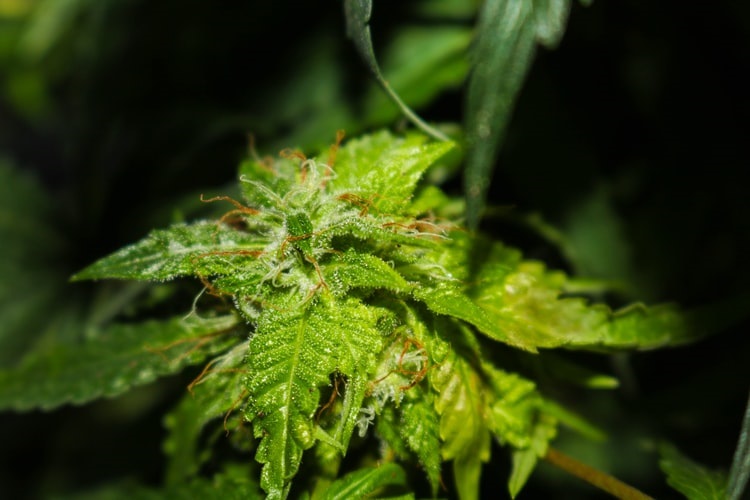Insects with chewing mouthpieces such as spider mites on cannabis plants can bring about great destruction to the leaves and other sections or parts of a plant. Other destructions brought by spider mites on cannabis plants are leaf skeletonizing, which removes tissue between the leaf vein, leaf defoliation, and soil surface cutting or root ingestion caused by this infestation.
The spider mites on cannabis plants, to be particular, are among the top-most problems in the industry of marijuana plants and other crops. Cannabis plants are one of the many plants that have been affected by these spider mites. Spider mites on cannabis plants are common garden pests to attack, puncture, and live in the plant leaves. When spider mites on cannabis plants are left untreated and are permitted to start eating unabated, these infected leaves are likely to turn brown and ultimately fall off the vine and bring vast damage and impact to growers and the plant’s yield.
Lifespan of a Spider Mite
The female spider mites have an estimated lifetime of 30 days and can develop and produce an average of 100 eggs during that period. In the case of two-spotted spider mites, young spider mites will complete their creation and development in as little as five days, which implies that a new generation of spider mites can reproduce. With this happening, spider mites populations appear to erupt, particularly under favorable climatic conditions like a hot and dry season. The scale populations of two-spotted spider mites are often more likely to brush plant leaves and stem with webbing.
Spider mites on cannabis plants prey on chlorophyll. They use their cutting mouthpieces to puncture individual plant cell walls and to draw out the essential fluids that the cells produce. Insects with sucking sections of the body, such as spider mites on cannabis plants, eat and feed themselves by sucking sap from the plant tissues. There are few numbers of insects concerned with the transmission of plant diseases, and these insects that transmit and spread plant diseases are referred to as vectors.

How Spider Mites Damage Plants
Spider mites are known and considered as vectors that infect and damage plants. Sucking of the sap can induce spotting on the plant or stabbing of vegetation, curling of leaves, and stunted or misshapen fruits, which will lead to damage. An unhealthy state of the marijuana plant may ensue, and there may be loss of profit or poor quantity of harvest. However, there are other concerns related to the health of the plants due to insect infestation. There are few insects that are concerned with the transmission of plant diseases, and these insects that transmit and spread plant disease are referred to as vectors. Spider mites are known and considered as vectors that infect and damage plants.
How Spider Mites Looks Like on Cannabis Plants
Spider mites on cannabis plants are practically microscopic microorganisms that can be seen and spotted using a microscope’s 10x lens. The typical adult size of spider mites is 1/50 inch in length, which is almost as wide as the span’s duration at the end of the paragraph. Several types of spider mites are very tiny and cannot be easily identified, and it is still difficult to recognize them with the naked eye.
The spider mites do come in several colors, like red and black. Spider mites are the most common garden pests that attack and destroy the cannabis plant. These tiny mites enjoy and love to live on the underside part of the marijuana plant leaves, and they are able to produce and make their protective silk webs to hide and place behind their translucent eggs. These spider mites on cannabis plants feed themselves off plant sap and this hinders the development of plants and will eventually impact their overall health and state and the scale of marijuana yield.
How to Trace Spider Mites
Leaves containing several tiny white spots or are exhibiting a stippled pattern are possible spider mite infestation symptoms. When you find stippling or webbing on your seeds, using a magnifying glass to examine all leaves’ sides is a good method.
However, these spider mites are tiny and can only be seen under a microscope, and there are telltale signs to spot these spider mites on cannabis plants easily. Here are the ways to trace spider mites.
First is stippling. Carefully observe white or yellow spots present on the plant’s foliage. Second is to look and check for small white spots on the leaves; these are the translucent eggs of spider mites. The third is to observe the visible forming of fragile silk webbing around the leaves, branches, and buds of the plant and observe if there is a visible presence of mites on plant foliage.
Another way to easily trace and identify spider mites on cannabis plants is to check using a white sheet of paper. Using a white sheet of paper, place a leaf on the top part of the paper, press it slowly, and wait for possible movement inside. If there are spider mites on the cannabis plant, expect that there will be tiny microorganisms to crawl over the surface of the blank leaf.

How to avoid and get rid of spider mites
Once there are visible signs of infestation of spider mites on cannabis plants, better act as quickly as possible as the spider mites, especially female mites, reproduce quickly at about 140 eggs every day. Despite the threat, there are still tips that will help solve insect problems and get rid of these spider mites.
Cleaning and Brushing the Plant
Whenever you water the plants, clean and brush them too, using a strong jet of high-pressure hose to spray leaves at least once a week. This method should be done early in the morning every week. If necessary, aim to reduce the pH balance of your water to around 3-4. You can reduce your water’s PH by incorporating or adding acids to your bases (water) like ammonia, nitric, phosphoric, or citric acid.
Make sure to spray the underside of the stems, because spider mites are more likely to congregate in that area. Second is to look for a touch pesticide spray like an insecticide cleaner. These are allowed to be used with all sorts of plants, including cannabis. While using contact sprays, try to strike the pests and their eggs specifically with the spray (the main term here is touch).
DIY Pesticide
If you are a fan of doing DIY’s, you can use water and garlic to create your insecticide mite mist. Remember to re-apply the spray according to the package directions before all the mites have been fully eliminated from your plants. Typically this will take multiple applications. You can rotate the pesticides that are being used. Mites are effective at developing immunity if they are just attacked with one particular mist. A very important fact to ponder on is to never use systemic pesticides on the cannabis plant. Using this type of pesticide can make the chemicals penetrate the plant vascular system and may be harmful to both humans and livestock. Always use chemicals that are recommended to be used on edibles such as fruits and vegetables.
Preventive Measures Against Mites
Prevention of spider mites in cannabis plants doesn’t require over-fertilization of the plant just to “prevent” infestation. Hence, over-fertilized plants could be more appealing and inviting to female spider mites because they produce more proteins and amino acids beneficial to this insect. Preventive care is the safest approach, or as what we always say and hear, “Prevention is always better than cure”.
Preventing the infestation of spider mites will save you more time and money than treating actual problems. Do not recycle the soil from plants that have been infested by insects in the past. Submerge all new plants in a non-toxic miticide before placing them in your garden. Always maintain moderate temperatures and strong humidity. In such circumstances, mites fail to replicate.
Cutting the Affected Parts
Be alert and immediately cut off the affected vegetation to kill it. Introduce predatory mites or insects to your backyard that you can purchase online or at planting centers near you. Always remember to keep the rising room tidy and always make sure you clean your growing room daily to avoid spider mites that enjoy filthy and dusty places. Maintaining cleanliness covers everything from simple gardening equipment (such as pruning shears) to high-end equipment such as extractors. Producers and growers should need to plan preventive measures and anticipate pest infestation that spread plant diseases, especially spider mites on cannabis plants.
Disease-Resistant Seed Varieties
One of the many preventive measures that could be used to avoid spider mites on cannabis plants is to use disease-resistant or sensitive seed varieties. You should also schedule the planting season to avoid exposure to vectors, use techniques or materials such as row covers to remove the insects, closely track your crops, and be prepared to react rapidly with rescue treatment, measures, and tools if the insect population starts to increase.

